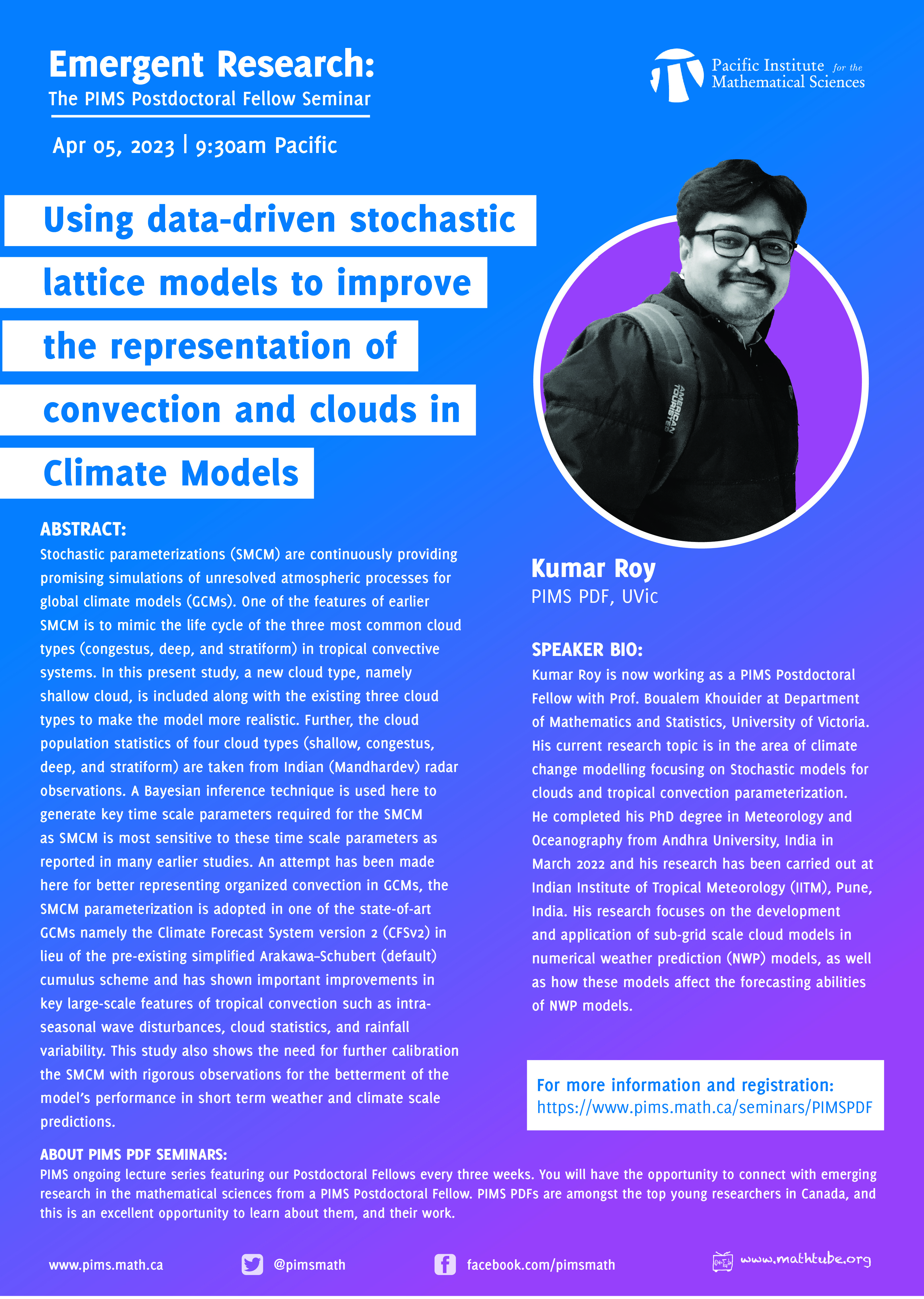The PIMS Postdoctoral Fellow Seminar: Kumar Roy
Topic
Using data-driven stochastic lattice models to improve the representation of convection and clouds in Climate Models
Speakers
Details
Stochastic parameterizations (SMCM) are continuously providing promising simulations of unresolved atmospheric processes for global climate models (GCMs). One of the features of earlier SMCM is to mimic the life cycle of the three most common cloud types (congestus, deep, and stratiform) in tropical convective systems. In this present study, a new cloud type, namely shallow cloud, is included along with the existing three cloud types to make the model more realistic. Further, the cloud population statistics of four cloud types (shallow, congestus, deep, and stratiform) are taken from Indian (Mandhardev) radar observations. A Bayesian inference technique is used here to generate key time scale parameters required for the SMCM as SMCM is most sensitive to these time scale parameters as reported in many earlier studies. An attempt has been made here for better representing organized convection in GCMs, the SMCM parameterization is adopted in one of the state-of-art GCMs namely the Climate Forecast System version 2 (CFSv2) in lieu of the pre-existing simplified Arakawa–Schubert (default) cumulus scheme and has shown important improvements in key large-scale features of tropical convection such as intra-seasonal wave disturbances, cloud statistics, and rainfall variability. This study also shows the need for further calibration the SMCM with rigorous observations for the betterment of the model's performance in short term weather and climate scale predictions.
Speaker biography: Kumar Roy is a PIMS Postdoctoral Fellow with Prof. Boualem Khouider at Department of Mathematics and Statistics, University of Victoria. His current research topic is in the area of climate change modelling focusing on Stochastic models for clouds and tropical convection parameterization. He completed his PhD degree in Meteorology and Oceanography from Andhra University, India in March 2022 and where he carried out research with the Indian Institute of Tropical Meteorology (IITM), Pune, India. His work focuses on the development and application of sub-grid scale cloud models in numerical weather prediction (NWP) models, as well as how these models affect the forecasting abilities of NWP models. Apart from his PhD work, he was also an active team member of the short-range ensemble prediction group IITM, Pune where he contributed in the model development for short range prediction of the Indian Monsoon. Kumar completed his Bachelor's degree in Physics (Hons) in 2013 from Burdwan University, India, and Masters in Physics in 2015 from Visvesvaraya National Institute of Technology (VNIT), Nagpur, India.
Medium: Read more about Kumar and their research here.
This event is part of the Emergent Research: The PIMS Postdoctoral Fellow Colloquium Series.
Additional Information
This seminar takes places across multiple time zones: 9:30 AM Pacific/ 10:30 AM Mountain / 11:30 AM Central
Register via Zoom to receive the link for this event and the rest of the series.
See past seminar recordings on MathTube.
Kumar Roy, University of Victoria

